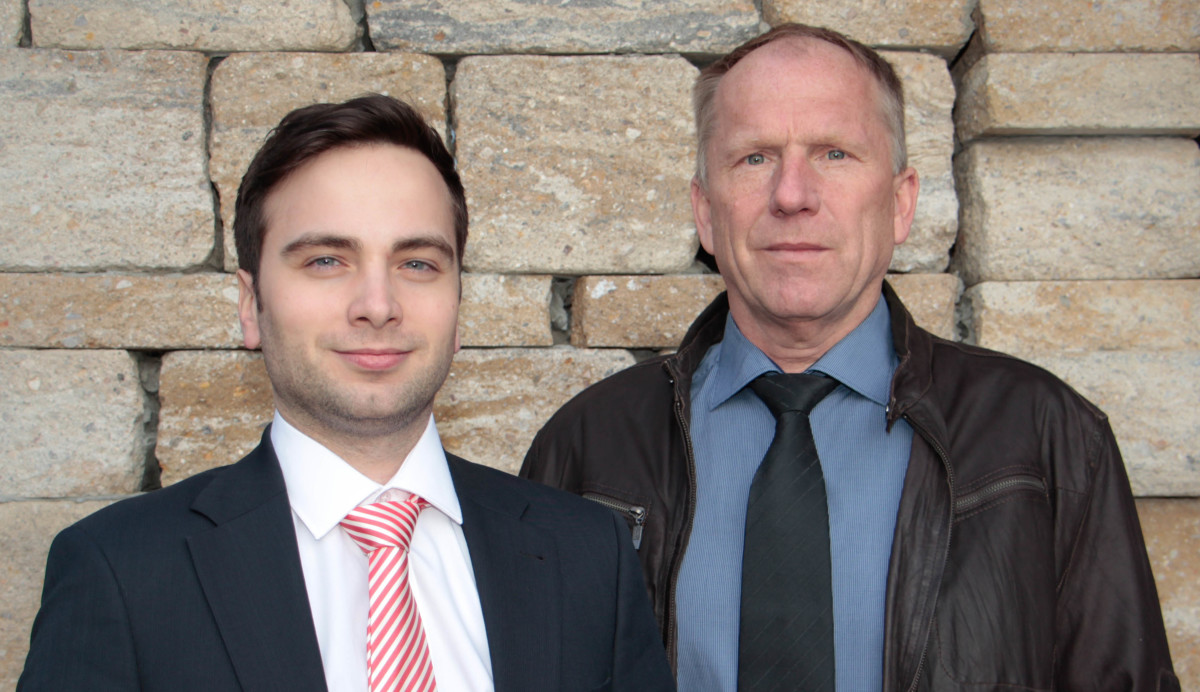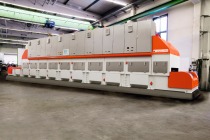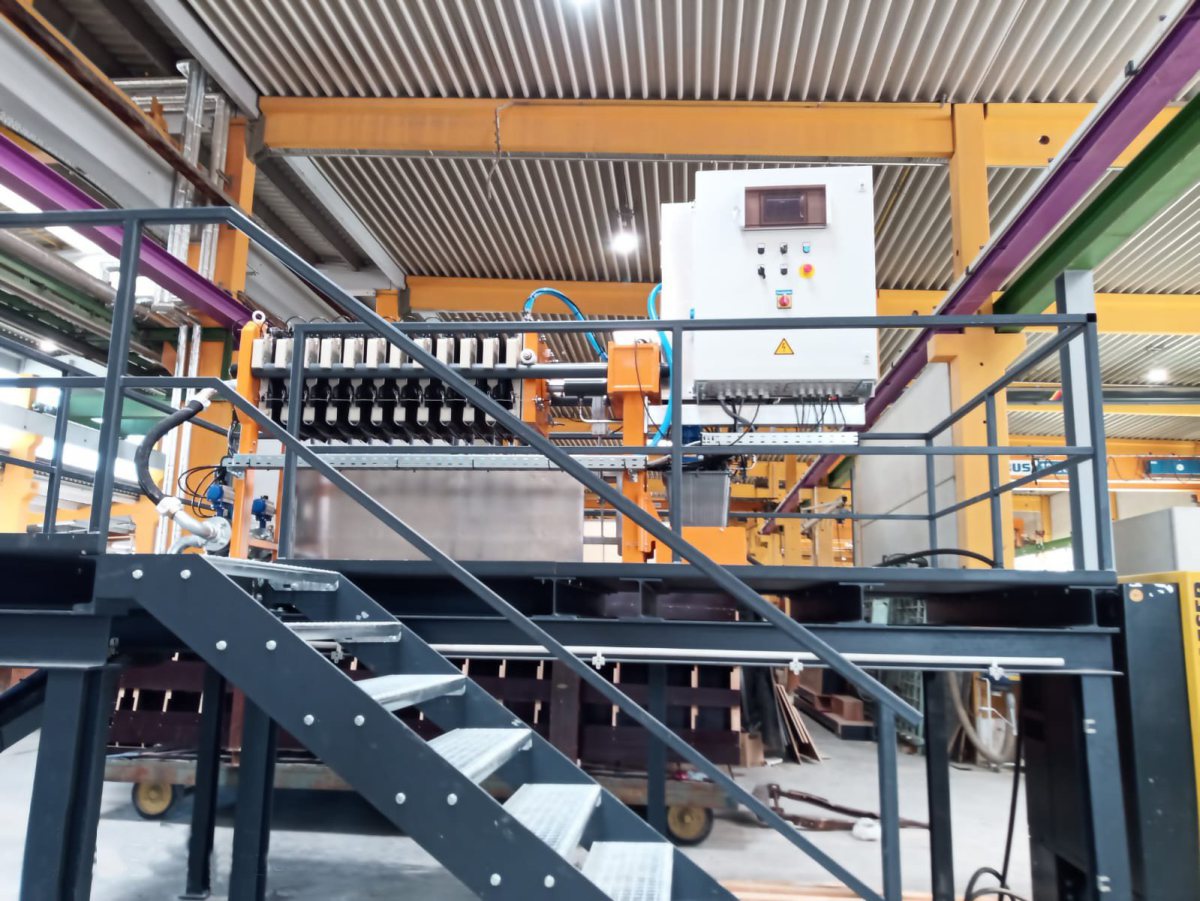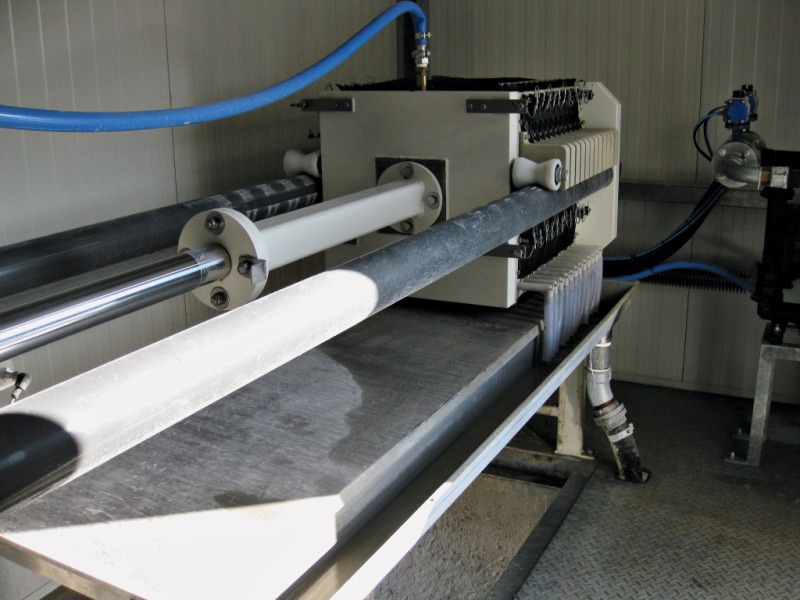Production starts running again after just nine months
Caused by a technical failure, at Rinn in Heuchelheim/Germany a hall of the slab production was destroyed entirely by fire in June 2008. Just in peak season when there is a great demand for concrete products for garden design Rinn had to react very quickly. However, thanks to a network of suppliers across Germany, which produced according to the specifications of Rinn, they maintained their ability to deliver. Now, the hall together with the new production line has been completed after a construction period of just nine months and the production is running again.
On 27th March 2009, the newly built hall in Heuchelheim near Giessen was officially opened and symbolically put into operation by Christian Rinn, General Manager of the traditional family-run company, and Roland Koch, Minister President of Hesse. SR Schindler Steinbearbeitungsmaschinen – Anlagentechnik GmbH was responsible for the project planning of the new production plant as well as the integration of a still existing 600 tons press. A total amount of 9 million euros was invested in the new building and refurbishment. The hall covering a floor space of about 2,500 m2 provides room for the new mechanical equipments, being designed for the highest demands on quality which Rinn makes on its entire product range of paving stones, slabs, and concrete furnishing elements for outdoor design. In this regard, the Teflon® coated slabs and paving stones especially may be emphasized as innovations.
Besides the still existing mixers in the concrete mixing tower for manufacturing the base mix concrete, there is a new face mix plant.
The 12 different storage bins facilitate dosing of the various additions for the face mix concrete. A so-called mobile balance is running below floor and carries the respective amount of aggregates from the bins – being process controlled according to the recipe. Feeding of the two face mixers is made by means of two material lifting devices, which are in this case 500-liter planetary mixers with an additional whirler for intensive mixing of the fine face concrete mix materials.
A high-pressure wash-out unit allows fast and thorough cleaning of the mixers. The waste water resulting from the process is directly fed to a water recycling plant and can be used again after the cleansing process. The complete equipment for mixing and metering has been planned and supplied by Pemat Mischechnik GmbH. To complete the plant, Bikotronik GmbH provided the control technique and process visualization. All switch cabinets have been placed far away from dirt, dust and unwanted access on a platform in a separate room. The displays for visualization are placed in a switch room in the area of the slab press.
The two slab presses are the core of the slab production line: a new OCEM press of 1,200 tons pressure and a reconditioned Henke press of 600 tons pressure. The presses run at cycle times between 10 and 13 seconds. The smaller press was completely reconditioned and furnished with a new control system.
The new production line incorporates a fully automatic flat stacking handling system for slab transport within the manufacturing process (SR Schindler), automatically transporting the slab rough casts on pallets to a curing chamber. With the aid of a special vacuum lifting device lifting and turning of slabs in various shapes and sizes is possible without requiring much change-over.
A laser controlled storage and retrieval unit for high-bay warehousing carries up to 7,000 pallets of both presses, i.e. stores the stacked pallets in the curing chamber and simultaneously provides the presses with empty pallets. A process control computer records the storing position as well as the setting time.
The curing chamber is built as a high-rack storage cased and insulated on all sides.
A controlled “tropical climate” provides for an optimum setting process. Temperature and humidity are permanently monitored and can be controlled separately of each other (Kraft Energy Systems GmbH & Co. KG). For this purpose, geothermal energy and the waste heat of the new compressor system is utilized.
Air locks avoid a loss of thermal energy when opening the gates for entering pallets into the curing chamber as well as transporting them to the outdoor area.
At the end of the programmed setting time (about 18 hours) the pallets are removed by a second storage and retrieval unit and are carried to the automatic transport system of the processing line (SR Schindler). Finally, a finishing process of the slab surfaces is possible which may be done by sandblasting, grinding, impregnating or even the unique coating with Teflon® protection. The carrying pallets remain in the system and are held ready for being charged again in the curing chamber.




